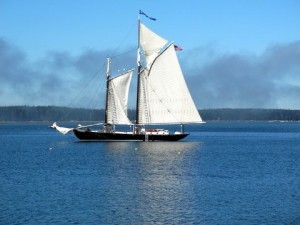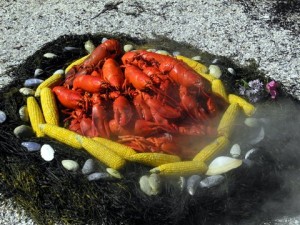
Downtown Roanoke’s historic center is just the beginning of what the area has to offer visitors. Photo by Clark Norton
Last week I spent several days in and around Roanoke, Virginia, hosted by the Roanoke Valley Convention & Visitors Bureau. The bureau brought in 19 travel writers and photographers from around the U.S. and Canada to discover what the area had to offer and, ideally, to write about it.
This is smart marketing. Publications large and small in states and provinces as diverse as California and Massachusetts, Colorado and Connecticut, Alberta and Ontario will carry travel articles about the Roanoke region that otherwise would never appear (most of the writers had never been there before). Some of the journalists were baby boomers, others were younger or older, so they’ll chronicle the destination from a variety of perspectives.
The press trip was organized by Geiger and Associates, a Tallahassee, Florida-based… Continue reading
Tourism Fiji recently announced a new branding campaign based on the claim that the Pacific island nation is the happiest place on earth.
The new Tourism Fiji slogan is “Fiji — where happiness finds you.” Tourism Fiji CEO Rick Hamilton noted the irony that while the “whole world is continually looking for happiness, actually it’s Fijians, the people who are trying the least, who have it the most.”
The new branding is based on a 2011 survey called the WinGallup Global Barometer of Happiness. The Fijian survey was conducted for WinGallup by the Tebbutt Research Group, while different groups surveyed 57 other nations around the world.
In Fiji, almost nine out of ten people said they were happy, compared to just 53 percent of the entire global sample who said they… Continue reading
Recently I’ve written about the problems that fake and fraudulent consumer travel reviews — of hotels, restaurants, attractions and the like, called “astroturfing” — are causing readers of online sites who are trying to get honest information while planning their trips or while on the road.
The New York State attorney general is even handing out fines for such underhanded practices as company owners hiring cheap overseas labor to write positive “reviews” of places they’ve never been, or asking their employees to give competitors’ companies bad reviews, or just writing (rave) reviews of their own establishments themselves.
Since surveys have shown that consumers place a high degree of trust in online customer reviews, it’s essential that they be as accurate and unbiased as possible.
With many baby boomers thinking of relocating upon retirement (and thousands are now reaching… Continue reading
Baby boomers were among the main driving forces behind the environmental movements that blossomed in the 1970s and beyond, and many baby boomers try to stay eco-conscious when they travel.
Eco-tourism is, in fact, a big force in the travel business, partly because baby boomers have embraced it so readily.
The last thing any of these boomers wants to do is unwittingly support a business that feigns eco-consciousness but is really the opposite.
The World Society for the Protection of Animals (WSPA) has some tips for recognizing supposed eco-tourist attractions that actually hurt animals and the environment in general. They have a colorful name for this deceitful practice: greenwashing.
They single out a popular attraction in the Cayman Islands, the Cayman Turtle Farm — which claims to focus on conservation of… Continue reading

Acadia National Park — named one of the “ten best places where you can’t see fall foliage now.” Photo by Clark Norton
Among the many millions of Americans being hurt financially and otherwise by the U.S. government shutdown, now in its 11th day as of this writing, are small business owners in gateways to national parks who depend on tourist dollars to survive.
An important piece in the October 11th New York Times details some of the damage. While the piece focuses mainly on the economic costs to businesses near Utah’s Zion National Park — restaurants, lodgings, souvenir shops, bike rental places and the like — the same can be said for other gateway areas across the country.
They’re feeling the pinch — actually the squeeze — from West Yellowstone, Montana, to Gatlinburg, Tennessee (headquarters of Great Smoky Mountains National Park), and Estes Park, Colorado (Rocky Mountain National Park)… Continue reading
Baby boomers are among the participnts in Miami Culinary Tours’ Little Havana tours, chowing down on Cuban food. Photo from Miami Culinary Tours
A decade or so ago, inspired by her mother’s love for cooking, Grace Della came up with the idea for a Cuban-inspired food tour of Miami, “back when nobody had ever heard of food tours there,” she says.
Since then, she and several other devoted foodies have developed their own company, Miami Culinary Tours, which now offers daily food tours (with cultural components) of Miami’s South Beach and Little Havana neighborhoods.
Led by knowledgeable guides — who love both food and local culture — the walking tours last about two to three hours and make anywhere from five to eight food stops at restaurants, cafes, delis, bakeries and other eateries. The stops may change a bit from tour to tour, but you can always count on… Continue reading
In previous posts on the Maine windjammers Nathaniel Bowditch (go here) and Isaac H. Evans (go here), I talked about the experiences of sailing aboard these historic vessels.

The Great Schooner Race of Maine windjammers, held each summer. Photo by Meg Maiden
Now I’d like to put the spotlight on the Maine Windjammer Association, which represents ten traditional Maine tall ships, seven of which are National Historic Landmarks. Collectively, it’s the country’s largest fleet of historic, passenger-carrying vessels.
Besides the Bowditch and the Evans, they include the American Eagle, the Angelique, the Heritage, the Lewis R. French, the Mary Day, the Stephen Taber, the Timberwind, and the Victory Chimes.
While all of the vessels are privately owned, the Association promotes and markets the windjammers as a group, producing significant savings in advertising budgets for each ship.
All… Continue reading
There’s something about being out on an historic Maine windjammer on quiet Penobscot Bay on a beautiful fall day to help you forget all the stuff that’s going on elsewhere in the country and the world.
That’s where my wife, Catharine, and I were the last weekend of September: aboard the two-masted, gaff-rigged topsail schooner Nathaniel Bowditch, in the company of nine other passengers and five crew members, including Captain Owen Dorr, who along with his wife, Cathie, has owned the ship for ten years.
First built as a private racing ship in 1922, the Bowditch later saw action as a coastal patrol boat in World War II, and subsequently served as a fishing vessel before finally being outfitted as a passenger ship.
It now holds up to 24 passengers, though with that many aboard the sleeping accommodations and eating… Continue reading
Quick: When you think of Maine, what image pops to mind first? Chances are it’s lobster.
Is there any other state so identified with one kind of food — or so dependent for its economy on one? Vermont and maple syrup, perhaps, or Florida and oranges — except that Florida has a much more diversified economy.
On a recent trip to Maine for a windjammer cruise aboard the historic Nathaniel Bowditch sailing ship — which I’ll be writing about in subsequent posts — I was struck by the thousands of lobster traps floating in Penobscot Bay off the town of Rockland, where our cruise took place.
Lobsters love the Maine coast as much as Maine loves lobsters, at least until they get caught. Maine has the ideal environment for lobsters to thrive —… Continue reading
The entrepreneurial spirit is alive and well, as companies produce gadgets that wouldn’t exist without smartphones. Or folks traveling with smartphones. Here are two that I think baby boomer travelers will find useful.

A little boy — someone’s grandson? — watches a video using a Keyprop to hold up the phone. Photo from Keyprop.
The first new gadget is pretty ingenious: it’s called a Keyprop. You can use it to prop up your phone so you can read from it, watch videos and or even take selfies (if you download an iPhone app) without having to hold onto your phone.
In the shape of a key — it fits on your key ring so you’ll always have it — Keyprop is made of hard rubberized material and comes in a variety of colors like green, red, blue and black. It fits virtually all smartphones by inserting the prong into the… Continue reading
















